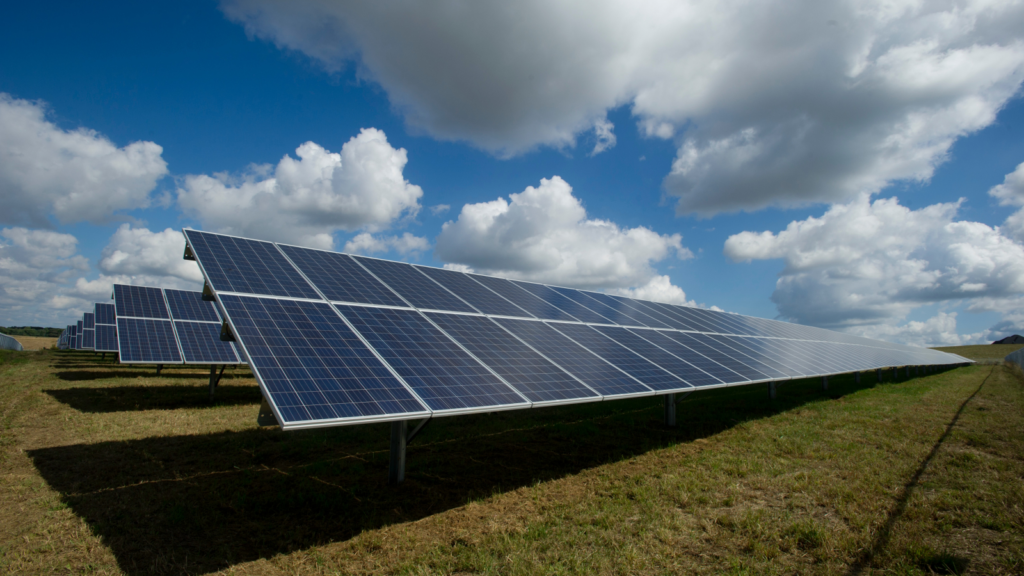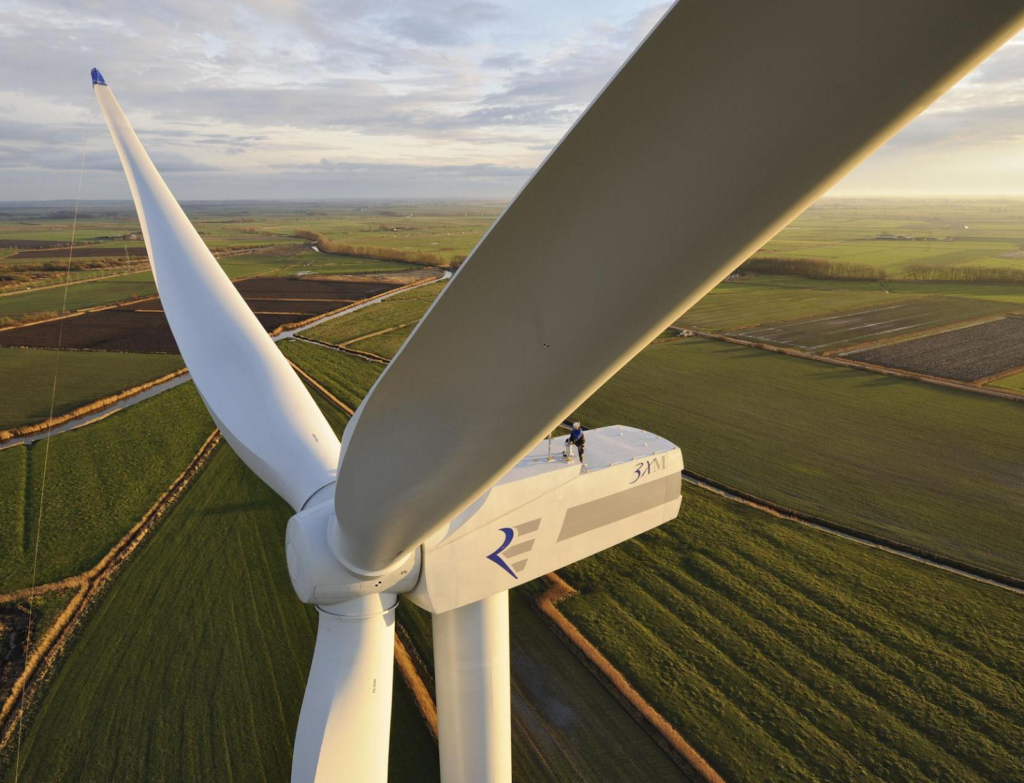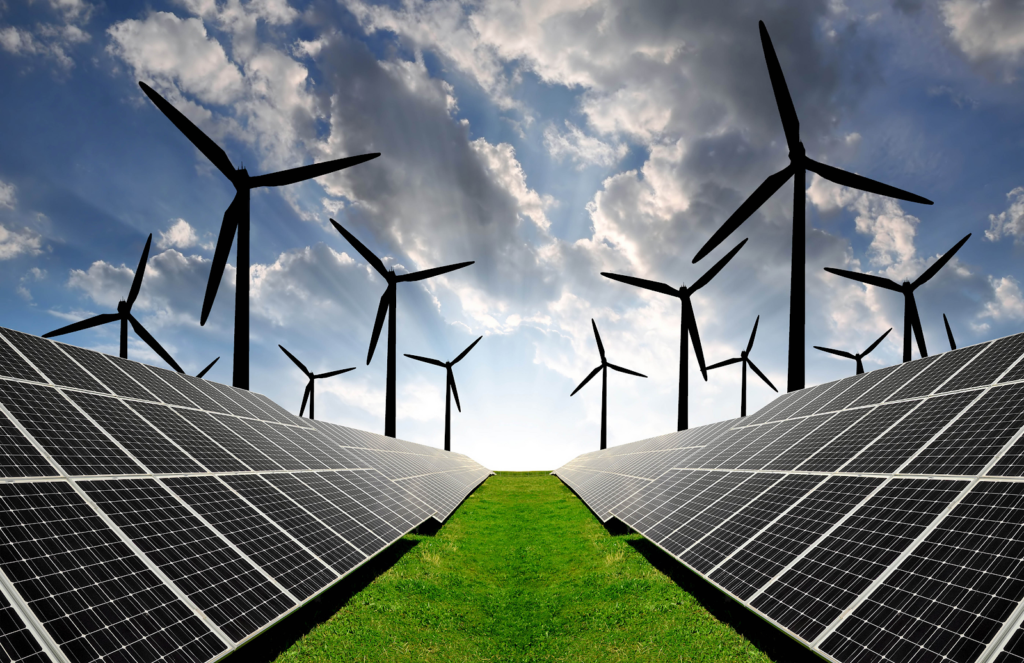Providing private homes with energy from alternative sources is becoming an increasingly profitable investment. It remains only to make the right choice between solar and wind power plants, since the efficiency of each of them depends on a number of features of the installation site. Let’s try to figure out when to give preference to buying SPP, and when WPP, taking into account all the factors influencing this decision.
Main selection criteria
There are two main ones.
1. Geographical location of the station and climatic features of the region.
The best places to install solar power plants of any type are areas with a high level of solar insolation. Its nominal values for northern Germany and southern Spain differ by almost 2.5 times, so this indicator plays a huge role.
On the other hand, the average wind speed on the coasts of the northern seas is about 10 m/s, and sometimes reaches 20-25 m/s. In such cases, the performance of windmills is much higher than solar power plants, and it is more expedient to buy a wind farm.
For regions of the middle zone, with moderate insolation of about 1200 W / m 2 and an average annual wind speed of about 7 m / s, the efficiency of SPP and WPP will be approximately equal. Often, household owners see the best solution as combining the first and second technologies, installing photovoltaic modules on the roof of the house, and several windmills on the plot. Buying such a dual system will cost more, but its versatility and operation around the clock will pay for the investment many times over.
2. Type and total capacity of installations.
In areas remote from civilization, where it is impossible or extremely expensive to connect to the central power grid, it will be necessary to install a completely autonomous station. For periodic visits in the warm season of a small cottage, a SPP of 2-3 kW may be enough. A country cottage, where the family lives year-round, needs a station of 10 kW or more.
A hybrid-type complex using energy from two sources – the central network and the sun / wind – can get by with less productivity. In this case, photovoltaic modules or windmills will be used as an alternative supply system that can provide energy for a house for a period of several hours to a day.
Network stations, intended mainly for the sale of generation at “green tariffs”, require the installation of the maximum possible capacity. This will become possible only if there is a sufficiently large area on the ground (SES) or a strip of the sea coast (SES).
Important! When ordering the installation of solar panels or turnkey wind turbines, you should focus on the total cost. At the moment, it fluctuates between $800 – $1,000 for each 1kW of plant capacity, which is equivalent to 1.0 – 1.4 MW*hours of productivity per year.
Solar panels
If the weather conditions of the installation site and some other factors made you prefer SES, you should choose the right type of photovoltaic panels .

1. Monocrystalline Mono-Si.
It is preferable to use where the solar insolation is high, and the modules themselves can be installed in the direction strictly to the sun – for example, on the southern slopes of the roof. The reason for this lies in the maximum performance of single crystals only under ideal conditions. At the slightest deviation from them – a non-optimal angle of inclination, cloudy weather, air temperature above + 30 ° C – their efficiency of 22-24% deteriorates significantly.
2. Polycrystalline Poli-Si.
They are used for installation in the middle lane with less than 270-300 sunny days per year. Proven to be more efficient even with a lower nominal efficiency of 18-19% on east and west roof slopes and in systems that do not allow seasonal tilt/rotation of batteries.
3. Thin-film Cd-Te.
A much more versatile type of next-generation photovoltaic film. Design features and low sensitivity to all kinds of non-optimal conditions make it possible to use films based on cadmium telluride not only on buildings, but also on greenhouses, farms and even cars, and generate 15-20% e/e per year more in temperate latitudes.
4. Thin-film based on expensive rare earth metals and organics.
At the moment, the first of them are too expensive, and the second do not have sufficient performance. Therefore, their use in home SES is still unproductive.
Wind turbines
The cost of specific power of each kilowatt of energy from wind generators is comparable to the prices of equivalent solar modules. Therefore, the main factor that leads to the decision to buy a WPP instead of a SPP is the wind rose in the places of the proposed installation.

The efficiency of windmills reaches 40%, which requires a wind speed of 10-12 m/s. At 7 m / s, the productivity drops by almost half and is compared with that of solar power plants. A drop to 3 m/s leads to a decrease in efficiency up to 8%, and in regions with such an average annual wind speed, the purchase and installation of wind farms is unproductive.
The selection of total power depends on the purposes for which it is planned to use the wind generator. The same principles related to the level of consumption apply here as for off-grid, hybrid and networked solar stations.
Basic rules for installing SES and WES
We list the most important of them.
1. For most silicon-based photovoltaic panels, the direction to the sun is critical. Ideally, the working surface should be strictly perpendicular to the incident rays at any time. On large solar farms, this is achieved by installing modules on rotary trackers. For small stations, it is sufficient to provide a direction to the south and an angle of inclination equal to the latitude of the area.
2. For the winter season, work surfaces should be tilted lower to the horizon. For summer – raise higher. At high latitudes, the principle is the same, but the rotation is carried out not along the North-South axis, but along the East-West direction.
3. When installed on rooftops, the mounting must allow easy access to the modules. This is necessary for the procedure of their periodic inspection and maintenance.
4. The efficiency of a wind generator directly depends on the height of the propellers, since every 10 meters above the ground the wind force increases by about 30%. For this reason, it is better not to save on high and durable masts.
5. When installed on roofs, such heavy supports are not needed, but only if moderate power generators and damping pads are used. More productive models are best mounted at a certain distance from the house. Their propellers make a lot of noise in the winds.
6. The ideal place for their location is areas with an average annual wind force of more than 7 m / s. In other regions, it is better to give preference to solar panels.

Optional equipment
In addition to the main generating equipment – photovoltaic panels and wind generators – you will also need auxiliary peripherals.
For SES:
- Inverter . Serves to convert direct current into alternating current, given to the network to power electrical appliances.
- Rechargeable batteries. They play the role of accumulators of excess generation for its subsequent return in the dark.
- Controllers. Special devices that control the distribution of electricity and prevent complete discharge of the battery.
- Fasteners. Its elements are necessary for reliable fastening of modules on roofs or ground areas.
- Periphery. Cables, control electronics and other devices that ensure the operation of the system as a whole.
Buying one panel is not enough, without the listed set of accessories, they are useless. On average, its cost is about 35-40% of the total costs for the station.
For WES:
- Fan support. The higher and stronger it is, the higher its value.
- Peripheral cables and electronics. They are cheaper than solar power plants, but the maintenance of windmills in general is quite expensive, while photovoltaics is devoid of this disadvantage.